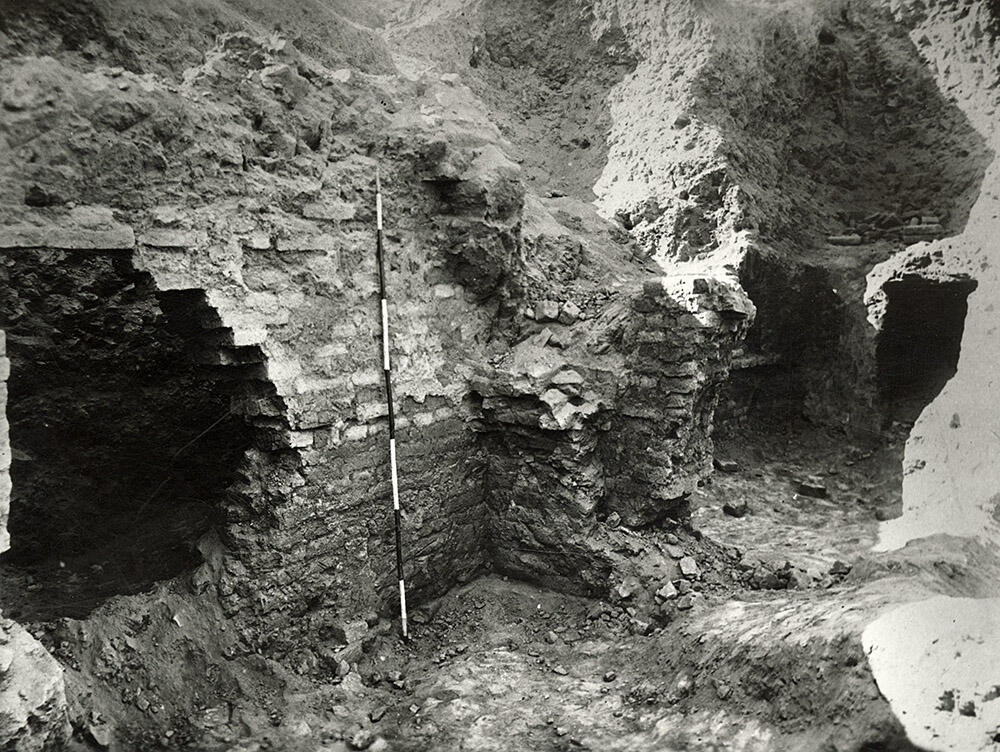Daya Ram Sahni continues his narrative after the ringstone discussion on the Mound AB excavations:
"The floor level of the building referred to above was reached at the depth of about thirteen feet below the surface of the mound. The portion of the structure that has survived consists of parts of two rooms. One of them appears to have been a fairly large hall, as its northern wall has already been exposed for a length of 22'6". It is standing to a height of about seven feet, and is three feet thick. Only a part of this room could be cleared, as the rest of it is hidden under a high mound of earth, and it will involve considerable expense and time to remove it. In the case of the other room only a small piece of the east wall remained. The southern wall had been, removed by brick diggers and a neat tunnel only remained to mark its position. So skillfully had this operation been carried out that I was at first misled to believe that the tunnel might be a narrow covered passage leading to some sacred object.
"Another tunnel, however, running at right angles to the one described above set all doubts at rest. The existing portions of the building, as mentioned above, are composed of bricks of the same size as occurs all over the site. The other remains unearthed in the trench belong to a later epoch. I am unable to offer any suggestions regarding the date of this structure, as it is difficult to say if the stone fragments of the Maurya and Kushan periods referred to above originally belonged to it. Its floor level is more than forty f et above the level of the surrounding fields.
"What lies buried in the lower strata it is impossible to say. I doubt if tunnelling by the villagers has penetrated so deep as to have destroyed the remains of the earlier periods, especially in the areas removed from the sides which every where bear testimony to the spoliation perpetrated. The expense of such excavation is, however, bound to be great. It is therefore proposed, first, to examine the interior o! this mound by sinking a shaft of sufficient width right down to the virgin soil, or to such depth as it is practicable to reach without destroying any useful evidence. The most suitable spot for this purpose would be the area immediately to the south of the trench just described."
- Daya Ram Sahni, Annual Progress Report of the Archaeological Survey [of India], Hindu and Buddhist Monuments, Northern Circle for the Year Ending 31st March 1921, p. 10-11.
"More examples of buildings that were destroyed by brick mining that included deep tunneling into the mound to collect bricks."
- Jonathan Mark Kenoyer, 2021.
[Appendix D] 2746 Harappa Area to east of Naugaza tomb after excavation
[Original caption] Harappa Area to east of Naugaza tomb after excavation

